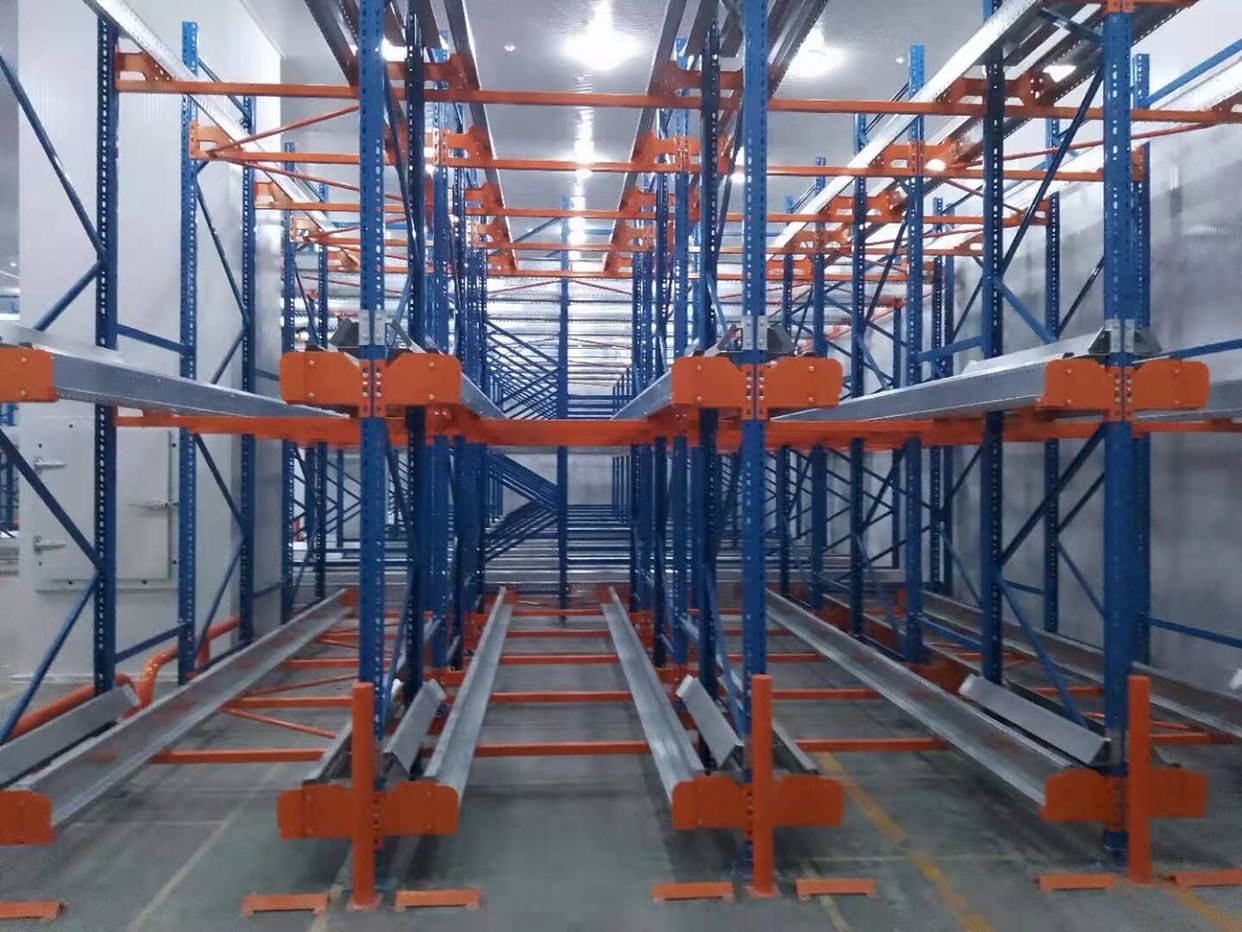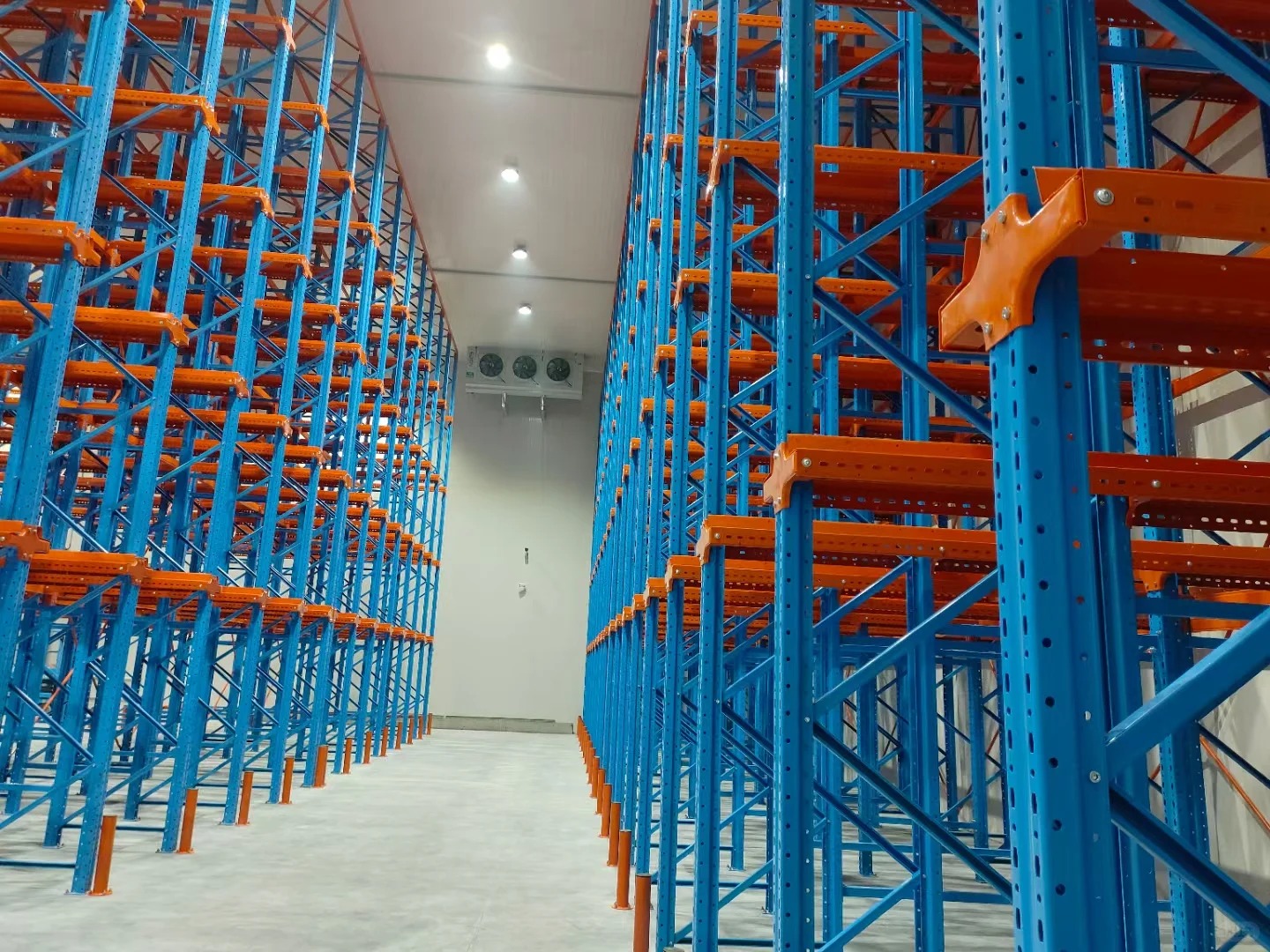Choosing the right racking system in warehouse environments is a critical decision that impacts everything from storage density and operational efficiency to safety and inventory accessibility. With numerous options available, understanding the core types of racking system in warehouse layouts is essential for optimizing your space and workflow. This guide explores seven fundamental racking systems used globally, detailing their structures, benefits, limitations, and ideal applications.

Structure: This is the most ubiquitous and recognizable type of racking system in warehouse facilities. It consists of vertical upright frames connected by horizontal load beams, forming individual bays. Pallets are stored one deep, directly accessible from the aisle.
How it Works: Forklifts can access every pallet directly without moving others. It's a "first-in, first-out" (FIFO) or "last-in, first-out" (LIFO) system depending on how inventory is managed within the accessible pallet positions.
Benefits:
100% Direct Access: Every pallet is immediately reachable.
High Flexibility: Easily accommodates various pallet sizes and SKUs within the same system. Simple to reconfigure.
Cost-Effective: Generally lower initial investment compared to high-density systems.
Excellent Visibility: Easy to see and count inventory.
Limitations:
Lower Storage Density: Requires wider aisles for forklift access, consuming more floor space per pallet position.
Best For: Warehouses with a high number of SKUs, fast-moving inventory, and operations requiring frequent access to all pallets. Ideal for distribution centers and manufacturing facilities.
Structure: This high-density racking system eliminates access aisles between rows. It consists of continuous vertical rails with guide rails at the floor level. Pallets are stored multiple deep (typically 3-10 pallets) and multiple levels high within a single lane.
How it Works: Forklifts physically drive into the rack structure to place or retrieve pallets. Drive-In racks have entry points at only one end (LIFO inventory flow). Drive-Thru racks have entry points at both ends (allowing FIFO flow).
Benefits:
Exceptional Storage Density: Maximizes cube utilization by significantly reducing aisle space.
Cost-Efficient per Pallet Position: Lower cost per stored pallet due to higher density.
Limitations:
Limited Accessibility: Pallets stored behind others cannot be accessed until front pallets are removed (especially in Drive-In/LIFO).
Lower Throughput Speed: Slower access times compared to selective racking.
Requires Skilled Operators: Precise forklift handling is crucial to avoid damaging the rack or products.
Reduced Inventory Rotation Control: Susceptible to "product burying," especially in LIFO configurations.
Best For: High-volume storage of homogeneous products with long-term storage needs or predictable rotation (e.g., beverages, paper products, seasonal items, raw materials). Less suitable for multi-SKU environments.
Structure: A medium-density type of racking system in warehouse settings that stores pallets multiple deep (typically 2-6 pallets) per bay, but on multiple inclined rails nested on wheeled carts within each level.
How it Works: Pallets are loaded from the front aisle onto the inclined rails. Each new pallet "pushes" the previous pallet(s) back along the rails. When unloading, the first pallet removed allows the next pallet behind it to roll forward to the front position due to gravity (LIFO principle).
Benefits:
Higher Density than Selective: Stores more pallets per aisle than selective racking (though less than Drive-In).
Improved Accessibility over Drive-In: Multiple SKUs can be stored per bay (lane), and access is faster as only the front pallet position needs to be targeted.
LIFO Inventory Flow: Naturally suited for products where the last item received is the first shipped.
Good Throughput: Faster loading/unloading cycle than Drive-In.
Limitations:
LIFO Only: Not suitable for FIFO inventory requirements.
Higher Cost: More complex structure than selective racking, leading to a higher initial investment.
Weight Limitations per Lane: The cart and rail system has a maximum load capacity per lane depth.
Best For: Operations needing higher density than selective racking but with more SKU variety per lane than Drive-In allows. Ideal for cooler/freezer applications (reducing open aisle time) and moderate-turnover LIFO products.

Structure: A high-density, dynamic racking system in warehouse layouts designed for FIFO inventory flow. It features inclined roller or wheel tracks within each lane, spanning multiple levels.
How it Works: Pallets are loaded at the higher "back" end of the inclined lane. Gravity causes pallets to flow smoothly down the rollers towards the lower "front" end of the lane, where they are unloaded. Braking systems control pallet speed.
Benefits:
Very High Density: Excellent cube utilization, storing many pallets deep.
True FIFO Flow: Ensures perfect stock rotation, critical for perishable goods or items with expiration dates.
Increased Picking Speed: Pallets are automatically presented at the front of the lane, minimizing forklift travel and wait time. Operators stay in one pick position.
Reduced Product Damage: Smooth, controlled rolling minimizes impact.
Limitations:
Highest Initial Cost: Significant investment in the flow tracks, braking systems, and supporting structure.
SKU Dedication: Each lane is typically dedicated to a single SKU for optimal flow.
Requires Consistent Pallet Quality: Warped or damaged pallets can jam the system.
Installation Complexity: Requires precise leveling and engineering.
Best For: High-volume operations with a limited number of fast-moving SKUs requiring strict FIFO rotation (e.g., food and beverage, pharmaceuticals, chemicals).
Structure: A specialized type of racking system in warehouse and yard storage designed specifically for long, bulky, or irregularly shaped items. It consists of strong vertical columns (uprights) with horizontal arms projecting outwards. There are no front columns or beams obstructing the load length.
How it Works: Items like lumber, pipes, furniture, sheet metal, rolls, or large appliances are placed directly onto the horizontal arms. Forklifts with attachments (like rotators or sheet lifters) or overhead cranes access the loads perpendicularly to the arms.
Benefits:
Unobstructed Access: Ideal for items that are too long or awkward for standard pallet racks.
Versatility: Arms can be adjusted vertically to accommodate different load heights and sizes. Can be single-sided (against a wall) or double-sided (back-to-back).
Durability: Built to handle heavy, often non-palletized loads.
Limitations:
Not for Standard Pallets: Less efficient and more expensive than pallet racks for standard unit loads.
Lower Storage Density: Typically requires wider aisles due to the nature of the loads.
Specialized Handling: Often requires specific forklift attachments or cranes.
Best For: Storing long materials (steel, timber, PVC), large appliances, furniture, carpets, rolls (paper, carpet), tires, and other non-palletized, bulky items.
Structure: This innovative racking system essentially places standard selective pallet racking onto motorized mobile bases that move laterally on floor tracks.
How it Works: Instead of multiple permanent aisles, only one or a few aisles are created at a time. Operators move entire rows of racking using a control mechanism (remote, pendant, or integrated system) to open an access aisle exactly where needed. The racks lock securely in position once moved.
Benefits:
Exceptional Space Savings: Can increase storage density by 50-80% or more by eliminating most fixed aisles.
Enhanced Security: Creates a "closed" system when aisles are not open.
Preserves Selectivity: Maintains direct access to every pallet position like selective racking, but only within the currently open aisle.
Improved Environmental Control: Reduces the volume of space needing heating/cooling (e.g., in cold storage).
Limitations:
Highest Initial Investment: Significant cost for the mobile bases, tracks, and control systems.
Access Time: Requires time to move racks to open an aisle.
Infrastructure Requirements: Requires a very level, reinforced concrete floor capable of supporting the concentrated loads.
Safety Systems: Requires sophisticated aisle access control and safety sensors (light curtains, motion detectors).
Best For: Facilities with extremely valuable or sensitive inventory, very high real estate costs, cold storage (massive energy savings), archives, or where maximizing floor space is the absolute priority. Often used for slower-moving inventory.
Structure: While not a standalone racking system, mezzanines create additional usable floor levels within a warehouse's high ceiling space. Standard racking systems (like selective, carton flow, or shelving) are then installed on the mezzanine deck.
How it Works: A structural platform (mezzanine) is built above the main floor, supported by columns or existing racking. Stairs, gates, conveyors, or lifts provide access. Racking is installed on this new level, effectively doubling (or tripling) the storage footprint within the same building footprint.
Benefits:
Maximizes Cubic Space: Creates significant new floor area without expanding the building.
Flexibility: The mezzanine level can be used for various purposes (storage, offices, packing stations) and configured with any suitable racking or shelving.
Cost-Effective Expansion: Often cheaper than building an extension or moving to a larger facility.
Limitations:
Structural Requirements: Requires sufficient clear ceiling height and floor loading capacity. Engineering and permits are essential.
Access Considerations: Need safe access points (stairs, lifts) which consume some floor space below.
Initial Investment: Significant cost for the mezzanine structure, decking, safety systems, and access points.
Best For: Warehouses with high ceilings needing significantly more storage or operational space without relocation. Ideal for integrating multiple functions (e.g., rack storage below, offices/packing above).
Choosing the Right Racking System for Your Warehouse
Selecting the optimal type of racking system in warehouse operations involves a detailed analysis of several factors:
Inventory Characteristics: SKU count, pallet size/weight, product dimensions, turnover velocity (FIFO vs. LIFO needs), fragility.
Warehouse Specifications: Available floor space, ceiling height, floor condition and load capacity, column spacing.
Operational Requirements: Picking/packing methods, required throughput speed, type of material handling equipment (forklifts, reach trucks, etc.).
Budget: Initial investment vs. long-term operational savings (space, labor, efficiency).
Future Growth: Scalability and flexibility of the system to adapt to changing business needs.
Often, the most efficient warehouse utilizes a combination of different racking systems tailored to specific inventory profiles and workflows within the same facility. For example, fast-moving SKUs might be in pallet flow racks, medium movers in selective racks, slow movers in drive-in or mobile racks, and long items on cantilever racks.
Safety: The Paramount Consideration
Regardless of the types of racking system in warehouse chosen, safety must be the top priority:
Professional Design & Installation: Systems must be engineered by qualified professionals to meet local building codes and safety standards (OSHA, EN, etc.) and installed correctly.
Regular Inspections: Implement a rigorous program for inspecting racking for damage (uprights, beams, connectors, anchors).
Load Capacity Compliance: Never exceed the rated load capacities of beams, frames, or decks. Ensure loads are evenly distributed and stable.
Proper Use: Train operators thoroughly on safe handling procedures specific to the racking system used. Use pallets in good condition.
Protection: Install column guards, rack protectors, and end-of-aisle guards to prevent impacts.
Understanding the core types of racking system in warehouse environments – Selective, Drive-In/Drive-Thru, Push-Back, Pallet Flow, Cantilever, Mobile, and Mezzanine-integrated – provides the foundation for making informed storage decisions. Each system offers distinct advantages in terms of density, accessibility, cost, and suitability for specific inventory profiles and operational flows. There is no single "best" solution for every warehouse. The optimal choice requires careful evaluation of your unique requirements, constraints, and goals. By investing in the right racking systems, warehouses can dramatically improve space utilization, enhance operational efficiency, ensure inventory accuracy and rotation, boost safety, and ultimately, strengthen the bottom line. Consulting with experienced warehouse design and racking system specialists is highly recommended to navigate the complexities and design the most effective storage solution for your specific needs.
 Wechat
Wechat
 Whatsapp
Whatsapp